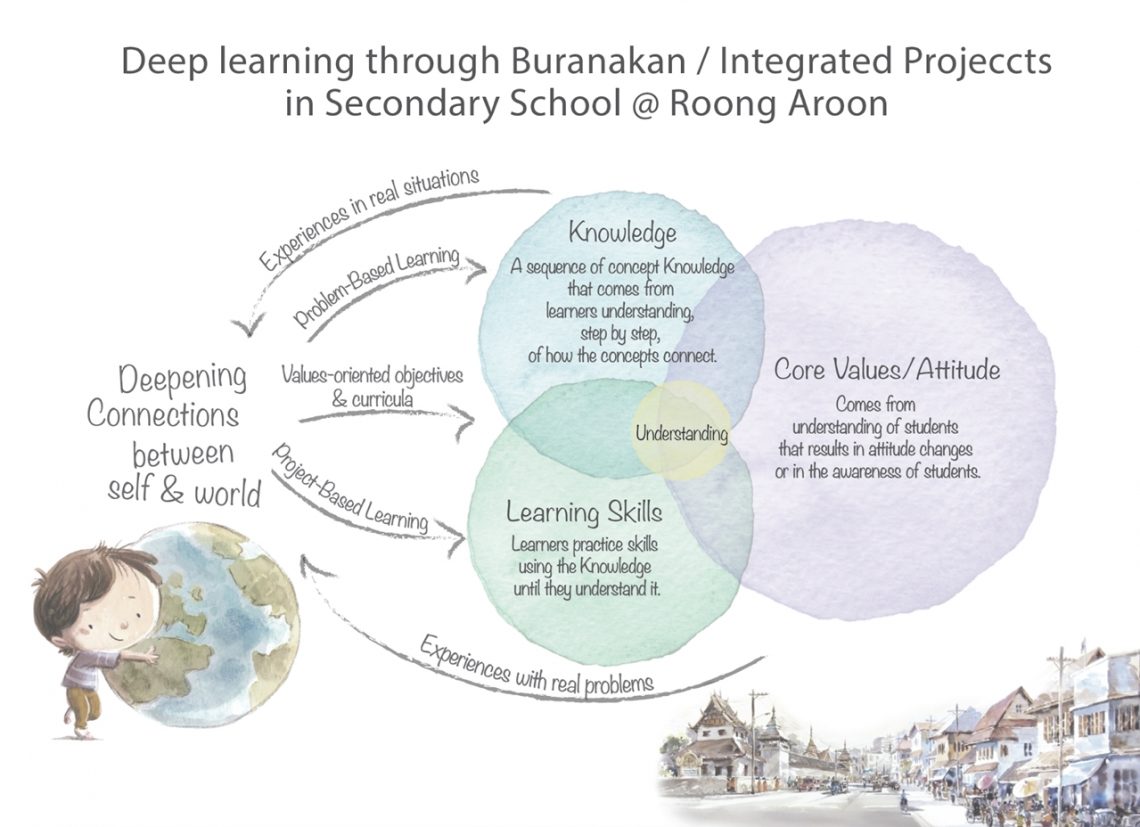
Buranakan in Grade 9: Deep Learning through Integrated Project Work
| Project-Based and Problem-Based Learning |
|
Project-based learning has been around for nearly a century as a teaching method that engages K-12 students in solving real world problems (see www.pblworks.org); it has shown increasing successes across subject areas, especially in sciences and social studies for strengthening students’ college readiness, along with skills for career readiness and life success (Kinsington, 2018). Problem-based learning, like project-based learning, has its own history, coming from the use of real-life case studies and simulations developed as a teaching technique in medical schools during the 1960s (Larmer, 2015). Both project-based and problem-based learning fall within the broader category of inquiry-based learning, with particular techniques, steps, and tools for adjusting to the needs of different learners, based on real-life situations for the projects or problems being addressed, often situations that derive from the students’ surrounding environments. Inquiry-based learning encourages students to discover, step by step, how to create a project and/or solve a real-world problem, developed from learning objectives set by the teacher or curricular program. What makes Roong Aroon’s approach distinct from other types of inquiry-based learning is reflected by the complex dimensions of the Buranakan curricula. RAS uses an embedded, layered approach to guiding students to identify and investigate local or regional problems in depth. The problems are rooted in a value orientation derived from students’ evolving connections to their community and the natural environment. There’s a spiraling process of connecting and reconnecting with real situations to which students feel a deep connection, not separate from their own lives. RAS also gives significance to nurturing virtuous and trustworthy friendships between students and teachers. Together, these dimensions create an approach to inquiry-based learning that deepen the learners’ interests, knowledge, skills, and values. Recently, McDowell (2021) gave examples of how PBL can be used to point students toward global problems facing the world, and how teachers can throw fictionalized “curve balls” at students to encourage quick adaptations to new expectations. In contrast to this example, Buranakan teachers look for authentic curveballs that emerge from the students’ own research. In the RA approach, the students themselves are guided to notice and identify gaps in their own knowledge connected to the increasingly complex problems that they can see for themselves. RAS Buranakan lessons are designed to spiral around the same theme throughout the year, going deeper and deeper into necessary knowledge and skills while allowing students to feel ownership for and deepening values around the projects or problems that they choose to investigate within the given theme. |
Roong Aroon’s approach to Buranakan enables students to become their own meaning-makers. They develop knowledge, skills, and values, in relationship with their teachers, while building capacities to contribute to the community. Their community may be others in their class, students in other classes or the wider parent community. As students mature, communities expand to neighborhoods, areas of their city, villages, and outward to more and more places that can enable the students to understand and live a healthy and sustainable lifestyle.
By Grade 9, the curriculum expands to several regions of Thailand, as teachers actively look for how to help students see connections between rural Thai life, along with necessary knowledge and skills for protecting the environment in ways that create systems with end products of healthy food and water from which all citizens benefit.

